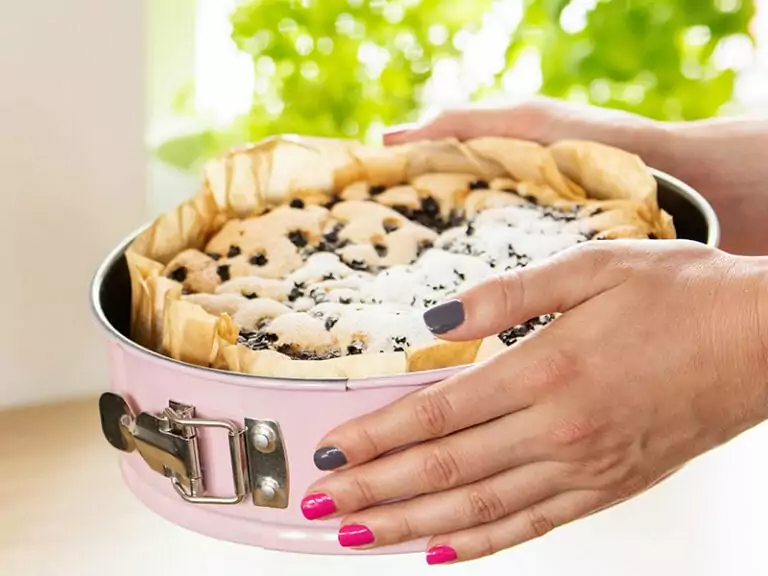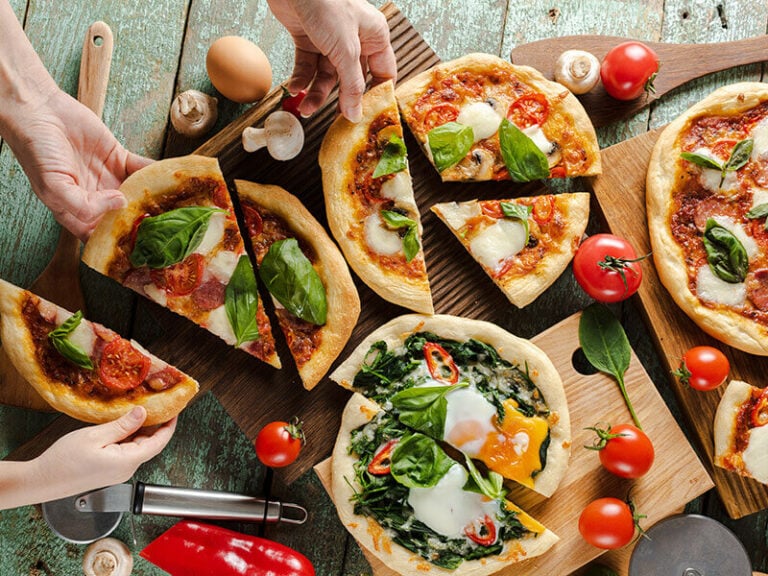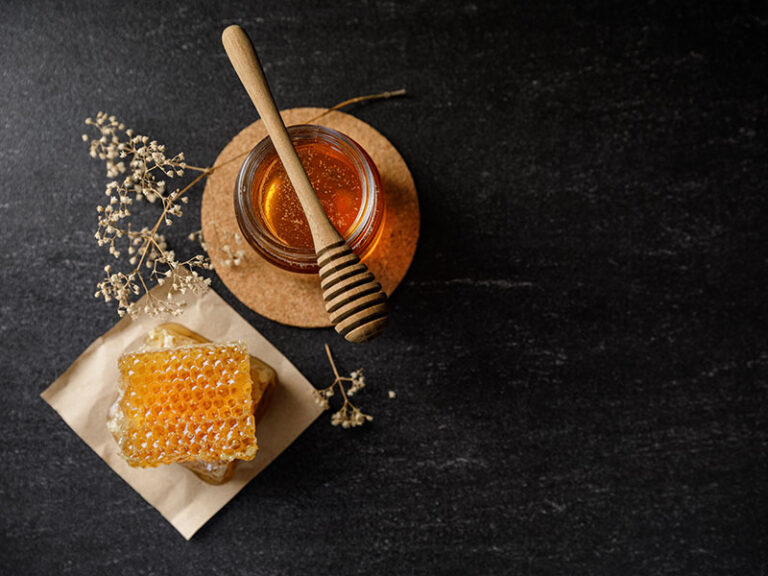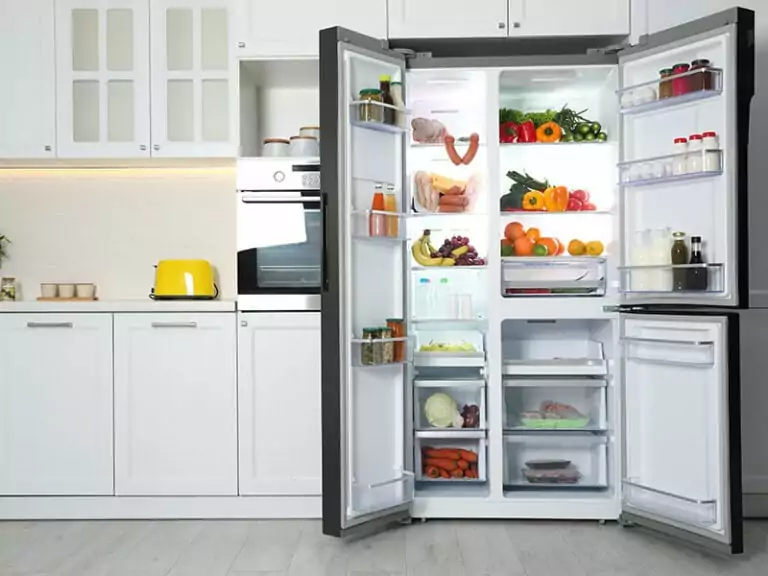Why should you rotate food when thawing it? This question has probably popped into your mind as you defrost your food to prepare for dinner. Perhaps, you might even wonder if you can skip this process altogether.
However, rotating food when defrosting is actually very important. After all, there must be good reasons behind why experts recommend you do this.
Have I captured your attention? If you’re curious about why it’s necessary to commit to this proper method of defrosting food, get ready to read and find out.
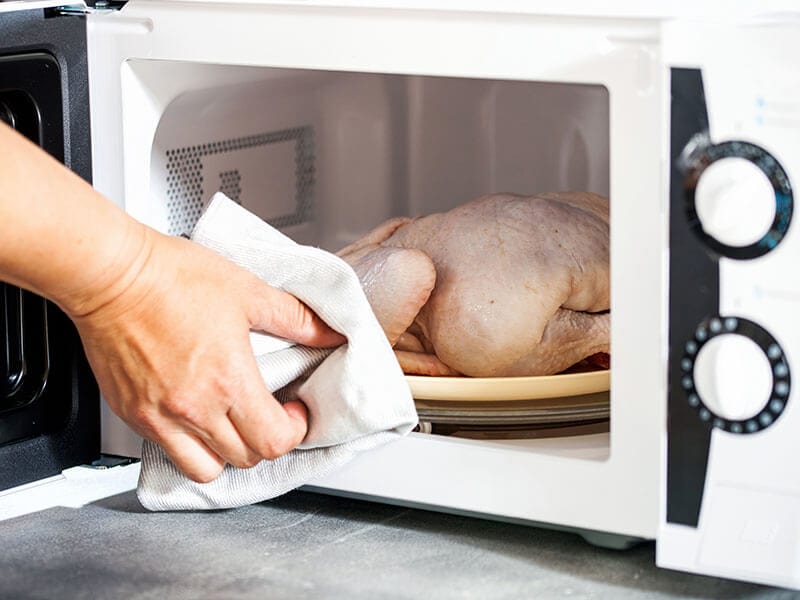
Deeper Understanding Of Thawing Food
Defrosting is the reverse of freezing – it is to make the food no longer covered with ice and can be processed and eaten. When you freeze the product, you can prevent the growth of bacteria (because bacteria are inactive below -10°C) but cannot completely kill it.
But when you defrost, the bacteria will have a chance to multiply again. It will grow when the food is outside the safe temperature zone. Therefore, you should pay attention to some precautions to avoid unexpected problems during defrosting operations.
When defrosting food, you usually won’t need to defrost frozen vegetables (can cook directly) but only defrost seafood, meat, or poultry.
If you mishandle this process, your food may no longer be safe to eat. Thawing your food properly will ensure that harmful bacteria cannot thrive on your food, thus posing threats to your health.
Creating a safe zone for defrosted products is crucial, and keeping thawed foods below 4°C should be considered.
Therefore, keeping food out of the temperature danger zone 40°F – 140°F (4°C – 60°C) (1) creates the ideal conditions for spores to germinate, bacteria to multiply, and toxins to be released.
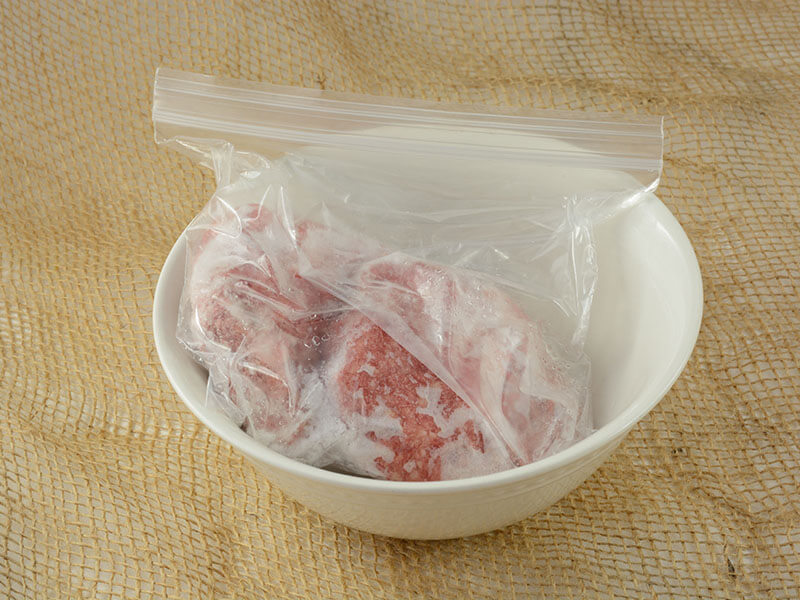
The Reason Why You Should Rotate Food When Thawing
To defrost food, you can use the refrigerator, microwave, or cold water. In particular, defrosting with a microwave can help you defrost faster than the refrigerator and water.
However, defrosting food in the microwave requires you to rotate the food to ensure perfect defrosting.
The rotation provides even heat distribution, thus preventing the ice from getting stuck under the food and making it defrost at a faster rate. In other words, the turntable in the microwave helps to keep the temperature in contact with the product evenly.
Additionally, rotating food in the microwave is one way to make sure it can reach a safe temperature (internal and external) as it thaws. This will ensure that you won’t encounter any problems or health hazards as you cook the food later on.
This defrosting method is considered the way to maximize the flavor and nutrients. After rotating, you can cook products immediately.
If your microwave doesn’t have a turntable, you must open the microwave door and rotate the container during mid-defrost.
Besides, other defrosting methods can also help you defrost safely and adequately. Continue reading to understand the defrosting process better and choose the best method for you.
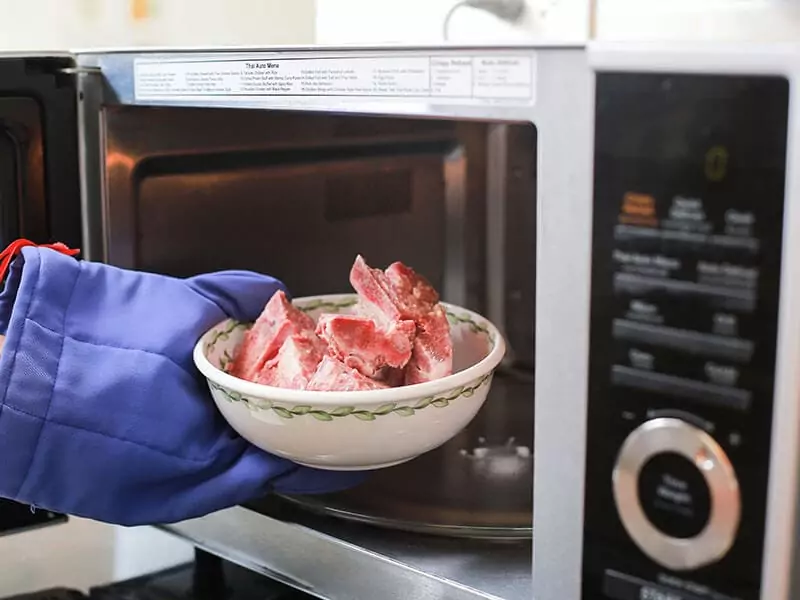
Guidelines On Thawing Of Raw Food: 4 Ways To Safely Thaw
Defrosting is not a complicated process, but it is crucial to understand how it works, the method, and the precautions in the process. Proper understanding and proper implementation will help you enjoy healthy and safe food.
The standard defrosting process usually has four methods, each with advantages and disadvantages, so you must consider carefully before choosing any option. Remember that safety comes first.
So that you can have a basic overview of the methods, I have listed the pros and cons of these methods.
Method 1: Defrost In The Refrigerator
Thawing food in the fridge ̣below 40°F (4°C) is considered the ideal method of defrosting food as it can keep the temperature in the safe zone. When choosing this method, you should plan well in advance to ensure it does not affect your cooking time.
Make sure you have at least 24 hours to wait for the food to defrost; otherwise, choose another method. Feel free to refreeze it even before or after cooking.
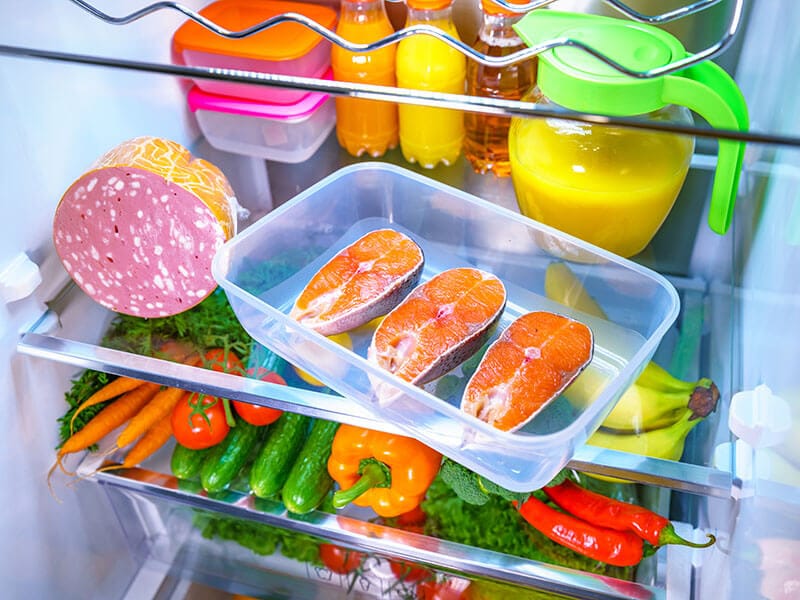
Instructions:
Step 1: Set aside the bottom shelf for defrosting food and remove all packaging. You can place a drip pan underneath the food so that the droplets do not contaminate the refrigerator.
A great way to avoid cross-contamination is by putting raw and cooked food in separate refrigerators. Remember to always cover your food when you put it in the fridge, or else it might absorb unpleasant odors.
Step 2: Occasionally check on your food and remove any liquid to prevent overflowing. After 24 hours, it’s safe to say that your food is thoroughly defrosted. Only cook food when it is wholly defrosted (no ice and soft).
Step 3: Frozen food defrosted in the fridge does not require to be cooked right away. In fact, if you change your mind, you can even put it back in the freezer to refreeze it.
- Keep an extra 1-2 days in the fridge for ground meat, fish, or poultry
- Keep for 3-5 days in the refrigerator for red meat cuts such as beef, pork, and lamb.
Here are some valuable tips to help you defrost food in the refrigerator.
Method 2: Defrost In The Microwave
As mentioned above, this is the fast defrosting method to save you time. If you have a party this afternoon but suddenly remember that you still have not planned to defrost the day before, this is the perfect method for you.
Aside from being a relatively fast way to thaw food, microwaving is also a fantastic way to prepare small chunks of meat.
However, due to the high temperature, the microwave may partially cook the defrosted food.
At that time, the bacteria will have a chance to work again, and you must quickly cook immediately. Do not put thawed food back in the refrigerator.
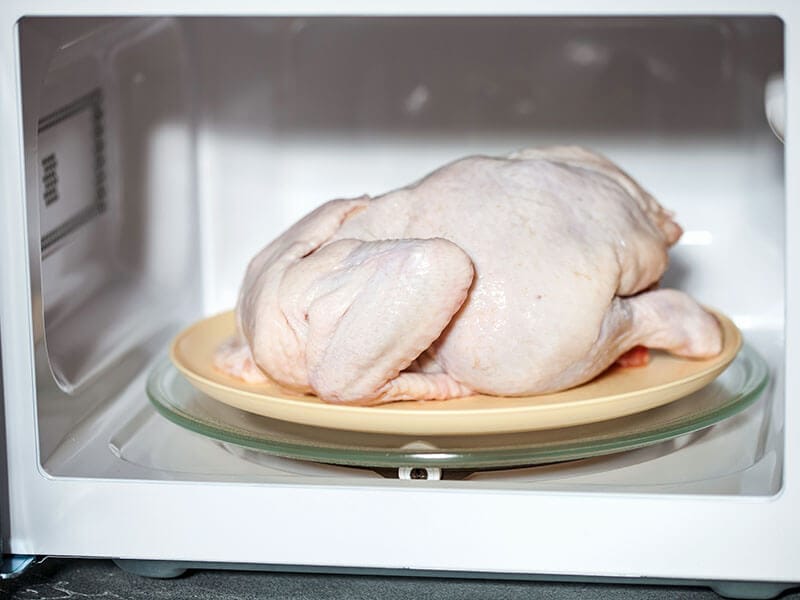
Instructions:
Step 1: Put the frozen food on a porcelain or microwave dish. Be sure to remove all plastic packaging or styrofoam trays from the food not to retain moisture that boils the outside of the meat. Don’t forget to cover the food as well.
Step 2: Select the “defrost” mode and set the microwave at 50% power (Other modes will cook food and or change its texture/flavor). In case your microwave doesn’t rotate, remember to turn the food 180° every once in a while to thaw it evenly.
In addition to the defrost mode, there will be the weight of the food and the corresponding time. Please select the appropriate level. (A pound of meat takes you 15 minutes)
Step 3: Check periodically to make sure your food is not overheated. If the food is warm-hot, it should be allowed to cool and turn before continuing the process.
If you defrost liquids such as soups, you need to take the food out occasionally to stir it. For packages containing several pieces of food frozen together, make sure you separate them as soon as possible. Once you get that down, thaw individual pieces one at a time.
Step 4: Take the food out of the microwave until no more ice can be seen and start to cook immediately
Learn more about defrosting mode and the right time when defrosting in the microwave.
Method 3: Defrost In The Cold Water
Water temperature and time play an essential role in this method. The water you use for defrosting should be cold (below 70°F), and the treatment time should not exceed 2 hours.
In addition, food bags must not leak to avoid bacteria from the surrounding environment that can affect the food.
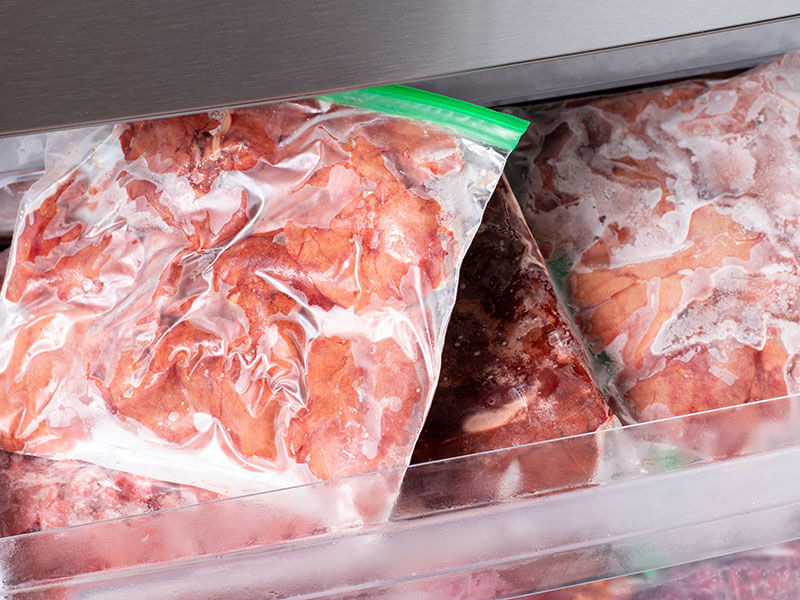
Instructions:
Step 1: Put the food to be defrosted in a resealable bag. After the food has been placed in the bag, press the bag to remove the air inside. Always store raw food in a sealed bag so as not to contaminate the defrosting area.
Step 2: Soak the food bag in a bowl of cold water (do not use hot or warm water to prevent bacterial growth) and place it in your sink.
Alternatively, you can put foods under running cold water instead of soaking them until they are completely defrosted. Make sure you never run cold water on the food directly – always put it in a bag before pouring cold water on it.
Step 3: Check every 30 minutes and change the water to keep the standard water temperature.
Step 4: Remove the food from the bowl and cook immediately. Clean the sink to avoid food contamination.
Do you know how to submerge raw food in the water properly.
Method 4: Defrost In The Cooking Process
If you do not have too much time to defrost using the methods above, you can cook food in a safe state. It is the fastest way for you to defrost food, but it requires a lot of attention during this process.
Check the instructions on the package to make sure the food does not need to be entirely defrosted before cooking. In addition, cooking time will be 50% longer than that of food that has been thoroughly defrosted.
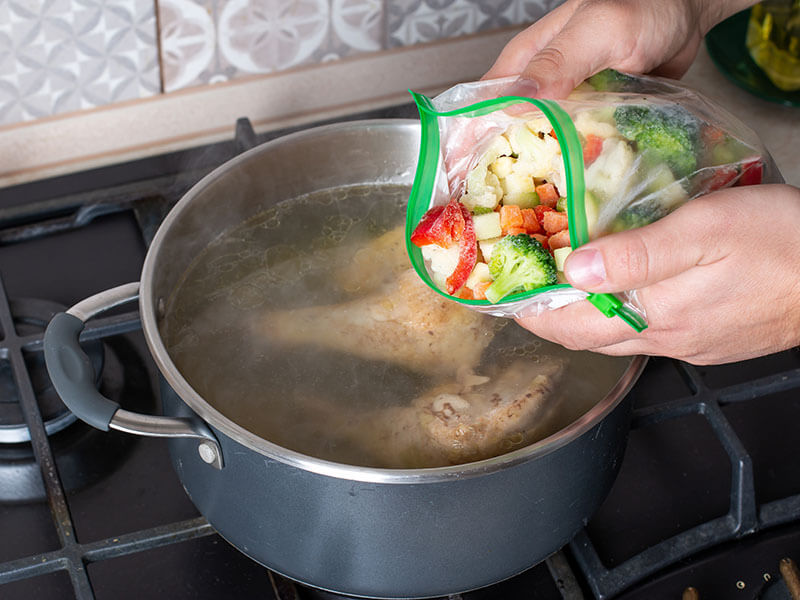
This method is best for small foods that are easily torn and chopped. You can then move small pieces of meat quickly, dispersing heat evenly to move food through a safe temperature zone.
However, you can also use this method on large pieces of meat. You can use the pressure cooker to defrost and adjust the appropriate temperature. This pressure cooker will ensure you can cook the food evenly, even if it hasn’t been completely defrosted.
How Can I Thaw Frozen Leftovers Safely
Defrosting leftovers is just as important as raw foods. If you defrost it the wrong way, you might face food poisoning. So, pay attention to three popular ways to defrost leftovers: cold water, microwave, and refrigerator.
- Thawing frozen food in the fridge: Leftovers remain safe during defrosting if you choose to defrost in the refrigerator. You should use food within 3 to 4 days of defrosting or can refreeze them.
- Thawing frozen food in water: Extra care should be taken whendefrosting with cold water, although this method is faster than defrosting in the refrigerator. Be sure to place frozen leftovers in plastic bags or leak-proof packages.
Bacteria from the surrounding environment or the air can get into the bag, or water can get into the food if the bag leaks.
- Thawing frozen food in the microwave: The fastest method is to defrost or reheat frozen food in the microwave. Continue heating it until it reaches 165°F when defrosting leftovers in the microwave.
When using a microwave, remember to cover leftovers to retain moisture and cook evenly. Add a little liquid and place the foods in a microwave-safe ceramic or glass dish.
Try this trick to reheat your leftovers safely. You can see this video to know more:
Can You Refreeze Thawed Food?
Once foods are defrosted, you should avoid re-freezing them to avoid unwanted harm. This refreezing process will reduce the quality of the food. However, you can only refreeze defrosted foods under certain circumstances below.
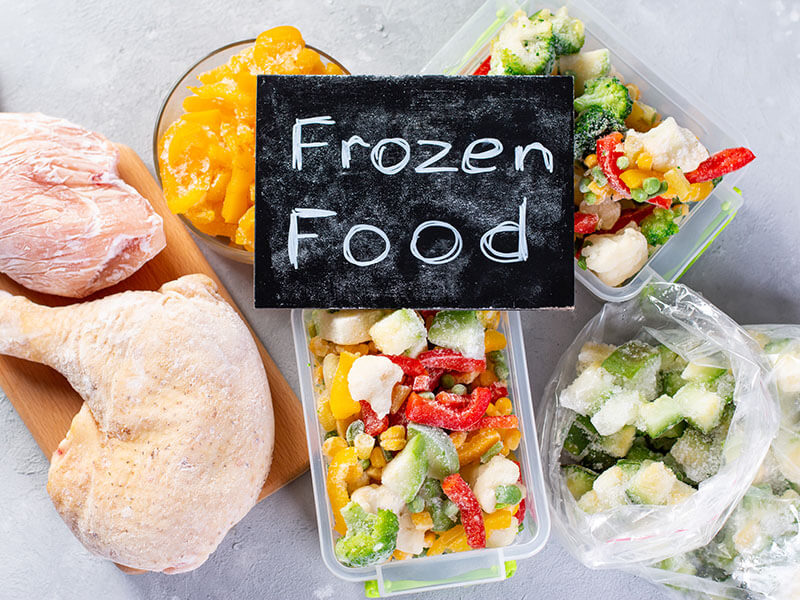
Therefore, you can only refreeze defrosted food or cooked food in the following cases:
- If you defrost in the refrigerator, with a temperature below 4°C.
- If you have not left it outside the fridge for more than two hours
- If you have not exposed food to an outside temperature of 32°C for more than an hour
If you defrost food by microwaves or using cold water, you cannot refreeze them without cooking them.
Don’ts And Do’s When Thawing Your Food
You have to pay attention to a few things to avoid unexpected problems. Defrosted food is still safe to eat, but it becomes a risk to your health if you thaw incorrectly.
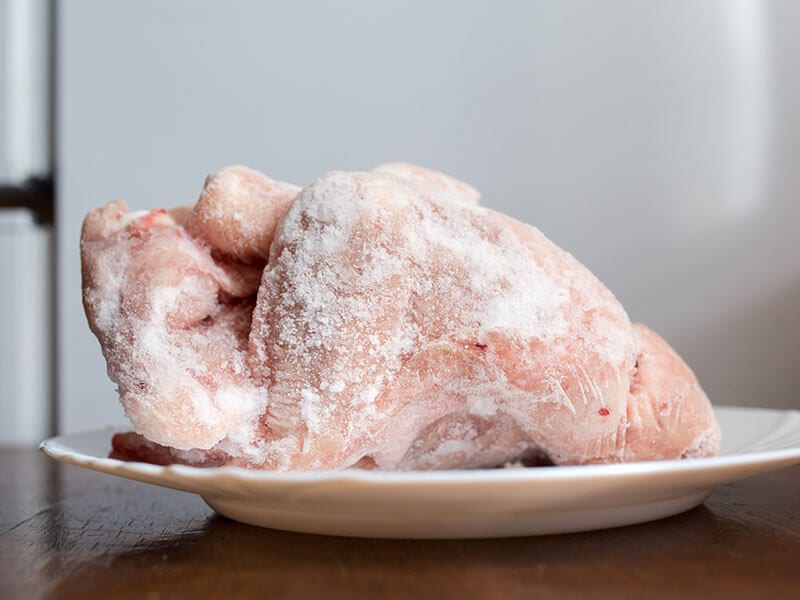
Make Sure You:
You should take these things into consideration for the best results every time.
Using Inappropriate Methods To Thaw Food
You can defrost foods with the methods above with cold water, microwave, or refrigerator. But you should avoid thawing your food inside the dishwasher, basement, garage, car, or outside at room temperature.
Planning Ahead Before Cooking
For proper defrosting, you should plan before you cook. If it is not urgent, you can choose the refrigerator method. It is the safest way to preserve the standard temperature of the food when defrosting.
Defrost The Necessary Amount
Adjusting the amount of food to defrost will help you a lot. You will not have to refreeze defrosted food and save yourself a lot of trouble.
Use Thawed Food Immediately
When defrosting foods in the microwave or cold water, you need to cook them immediately. That is the way to help you prevent the growth of harmful bacteria.
Check The Instructions
Be sure to check the instructions on each product’s packaging carefully. Each product may have different defrosting times and methods. Checking information helps you avoid unexpected problems.
Make Sure You Don’t:
Here are a few things you should avoid when cooking.
Use Unqualified Food
You should throw away spoiled food to avoid food poisoning. If frozen food has been left outside for more than two hours, throw it away.
Set The High Temperature For The Fridge
Make sure your refrigerator is set to the correct temperature. Check the temperature periodically that it stays below 40°F to keep the food safe.
Refreeze Thawed Food
While you can refreeze thawed food in certain circumstances, it is still not advisable to do this. After defrosting, food should be cooked and used immediately to avoid the growth of bacteria.
Cook Food When It Has Not Defrosted Thoroughly
It is best to defrost food completely before cooking it. Then it will not take you too long to cook. In addition, full defrosting will help you cook food evenly, avoiding the condition that the outside is cooked, the inside is uncooked.
Place Raw Food Next To Other Foods
Raw foods that defrost can harbor bacteria, so keep them away from other foods in the defrosting area.
That action will help you avoid cross-contamination from bacteria like Salmonella, Campylobacter, Staphylococcus aureus, Clostridium perfringens, E. coli, and Listeria monocytogenes – affecting your health. (2)
FAQs
If you still have some questions about the defrosting process, follow the questions below to get your questions answered.
A Word Of Caution That You Should Consider
Care is always a keyword in the process of defrosting food, including raw food and leftovers.
Freezing food can temporarily stop the activity of bacteria, and defrosting can reactivate the bacteria. Therefore, you should be careful to use defrosted food safely.
Choosing a defrosting method is entirely up to you, and planning ahead of time is vital. Safety comes first, so if you do not need to rush to prepare food, take it easy using the defrosting method in the refrigerator.
Which of my methods have you chosen for defrosting food? Did it work for you? Tell me your results, and do not forget to share with your friends about these helpful methods.
References
- “Danger Zone – Usda.gov”. fsis.usda.gov, 2021, https://www.fsis.usda.gov/food-safety/safe-food-handling-and-preparation/food-safety-basics/danger-zone-40f-140f
- Mechanisms of survival, responses, and sources of Salmonella in low-moisture environments – Frontiers in microbiology, 2021 https://www.ncbi.nlm.nih.gov/pmc/articles/PMC3827549/

